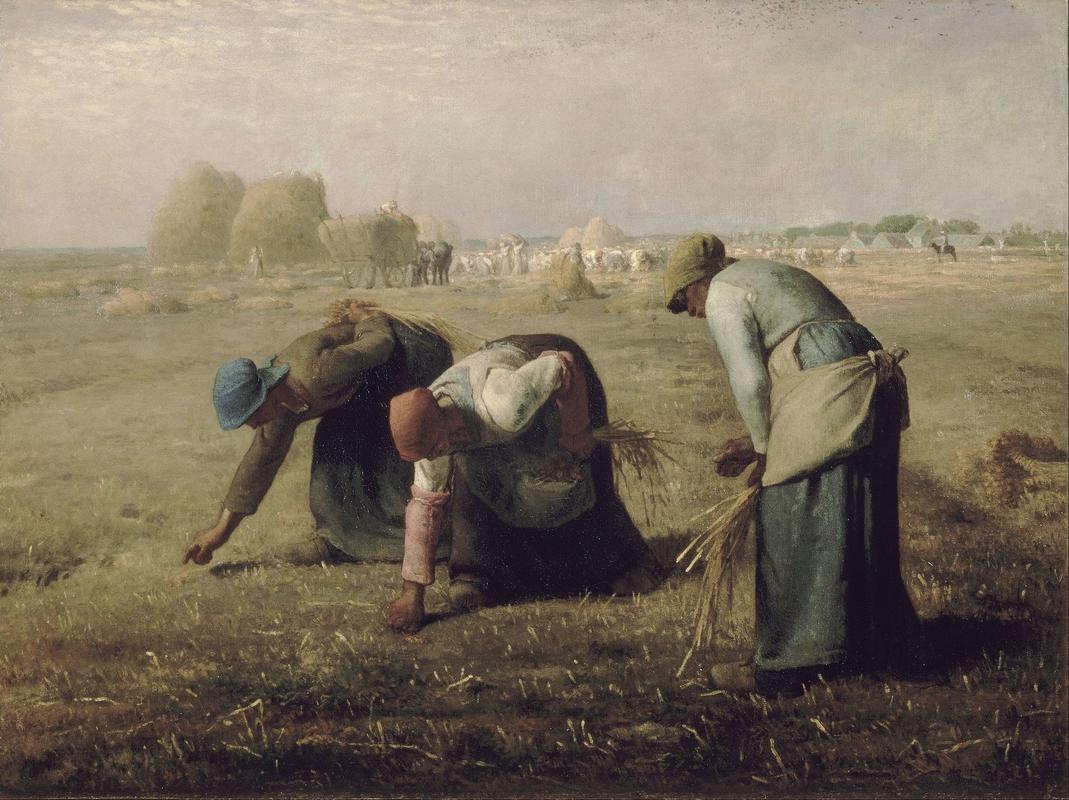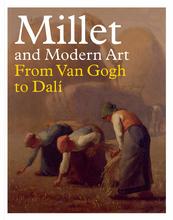More about The Gleaners
- All
- Info
- Shop

Contributor
At the 1857 Paris salon, Jean Francois Millet finally bit the hand that fed him.
The art scene in France was fairly rigid at the time. Millet had studied at Ecole des Beaux-Arts before he left for Barbizon. Realism was attempting to pave its way into the circuit, but the lobby for academy-certified painting styles was invincible, and academy did not want to look at pictures of “rural beggars," or gleaners. They didn’t deserve mention, and Millet was a traitor for favoring them. Fancy French society really didn’t have the stomach for this imagery.
As a young boy, Millet had spent a lot of time at his family farm. He assisted in the sowing, winnowing, harvesting, you name it. Millet’s paintings are about a life he once had. This painting is about the lives of those people he never noticed. While he gathered the bounteous harvest in the background, the gleaners toiled for microscopic grain in an empty field.
It was an ancient tradition, gleaning. Landlords would allow those less fortunate to rummage in the fields after the bulk of the crop had been harvested. Both the gleaners and the farmers have their backs arched to the ground. The physical labor involved could balance a see-saw. The farmers just got a better pay-off.
Millet was absolutely riveted by the tradition. He spent about ten years researching it and watched plenty of men and women embark on this voyage. Not many people spoke about this part of countryside living. But communist thought had recently pervaded the social fabric of France and Millet, among others, started noticing the rift between classes.
The Gleaners were as French as their farming neighbors, yet Paris refused to talk about them. The outrage at the Salon gives us a pretty good idea of what Millet was dealing with. A small band of historians argue that gleaners at the time did not look like that, that they were usually in rags and terribly malnourished. Their theory suggests that Millet may have dressed up his subjects so that the salon would at least look at the painting. He was attempting to soften the blow for them. Clearly, that didn’t go down very well.
Millet found it hard to make the sale as a consequence of the harsh criticism. When he did finally sell the painting, he was paid 3000 francs, or about $600. Quite the steal.
Sources
- “Millet, Jean-Francois The Gleaners.” ArtsHeaven.com. Accessed September 30, 2019. https://www.artsheaven.com/painting/artists/m/jean-francois-millet/the-….
- “Millet Biography, Life & Quotes.” The Art Story. Accessed September 30, 2019. https://www.theartstory.org/artist/millet-jean-francois/life-and-legacy/.
- “Art History Blogger.” Art History Blogger (blog). Blogspot, September 21, 2011. http://arthistoryblogger.blogspot.com/2011/09/jean-francois-millets-gle….
- “The Gleaners (1857) by Jean-Francois Millet.” The Gleaners, Jean-Francois Millet: Analysis. Accessed September 30, 2019. http://www.visual-arts-cork.com/paintings-analysis/gleaners-millet.htm.
- Harris, Beth, and Steven Zucker. Smarthistory. Accessed September 30, 2019. https://smarthistory.org/millet-the-gleaners/.
- Fratello, Bradley. "France Embraces Millet: The Intertwined Fates of "The Gleaners" and "The Angelus"." The Art Bulletin 85, no. 4 (2003): 685-701. doi:10.2307/3177365.
Featured Content
Here is what Wikipedia says about The Gleaners
The Gleaners (Des glaneuses) is an oil painting by Jean-François Millet completed in 1857.
It depicts three peasant women gleaning a field of stray stalks of wheat after the harvest. The painting is famous for featuring in a sympathetic way what were then the lowest ranks of rural society; it was received poorly by the French upper classes.
Check out the full Wikipedia article about The Gleaners













